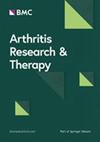Does extracorporeal shockwave therapy treat leg length discrepancy? an experimental animal study
IF 4.9
2区 医学
Q1 Medicine
引用次数: 0
Abstract
Extracorporeal shockwave therapy (ESWT) is widely used to treat musculoskeletal diseases, but its impact on adolescents with unhealed epiphyseal plates is concerning. It remains unclear whether ESWT applied to growth plates promotes or inhibits bone growth. Low energy ESWT does not cause damage of articular cartilage and promotes the growth of articular cartilage. Therefore, the application of ESWT to treat the leg length discrepancy is a possibleoption. Here, the 96 adolescent rats were used to demonstrate that different levels of ESWT developed different effects on the epiphyseal plate and bone growth. The effects and safety of ESWT on the epiphyseal plate were measured at different energy levels of 0.1, 0.25, and 0.5 mJ/mm² with 800 impulses, 4 Hz at the 7, 13, and 25 weeks. Additionally, the treatments promoted the growth and length of the tibia bone as the ESWT application by compared with Sham group. Notably, ESWT stimulated the expression of IL-1β at the 7 week, which then decreased by the 25 week. However, no apoptosis signals and cell death were detected, and there was no tissue damage to the epiphyseal plate. The expression of SOX9, BMP2, and BMP4 was observed in the epiphyseal plate following ESWT, suggesting a role in promoting bone growth. Our results suggest that ESWT is a safe therapeutic modality for stimulating bone growth at the epiphyseal plate in adolescents, leading to increased bone length. This approach holds potential for future treatment of patients with leg length discrepancies.体外冲击波疗法能治疗腿长差异吗?实验动物研究
体外冲击波疗法(ESWT)被广泛用于治疗肌肉骨骼疾病,但其对骨骺板未愈合的青少年的影响令人担忧。目前尚不清楚ESWT应用于生长板是促进还是抑制骨生长。低能ESWT不造成关节软骨损伤,促进关节软骨生长。因此,应用ESWT处理腿长差异是一种可能的选择。在这里,96只青春期大鼠被用来证明不同水平的ESWT对骨骺板和骨生长有不同的影响。在7周、13周和25周,分别在0.1、0.25和0.5 mJ/mm²的不同能量水平、800次脉冲、4 Hz下测量ESWT对骨骺板的作用和安全性。此外,与Sham组相比,ESWT组可促进胫骨生长和胫骨长度。值得注意的是,ESWT在第7周刺激IL-1β的表达,然后在第25周降低。但未见凋亡信号和细胞死亡,未见骨骺板组织损伤。ESWT后骨骺板中可见SOX9、BMP2和BMP4的表达,提示其具有促进骨生长的作用。我们的研究结果表明,ESWT是一种安全的治疗方式,可以刺激青少年骺板处的骨生长,从而增加骨长度。这种方法在未来治疗腿长不一致的患者中具有潜力。
本文章由计算机程序翻译,如有差异,请以英文原文为准。
求助全文
约1分钟内获得全文
求助全文
来源期刊

Arthritis Research & Therapy
RHEUMATOLOGY-
CiteScore
8.60
自引率
2.00%
发文量
261
审稿时长
14 weeks
期刊介绍:
Established in 1999, Arthritis Research and Therapy is an international, open access, peer-reviewed journal, publishing original articles in the area of musculoskeletal research and therapy as well as, reviews, commentaries and reports. A major focus of the journal is on the immunologic processes leading to inflammation, damage and repair as they relate to autoimmune rheumatic and musculoskeletal conditions, and which inform the translation of this knowledge into advances in clinical care. Original basic, translational and clinical research is considered for publication along with results of early and late phase therapeutic trials, especially as they pertain to the underpinning science that informs clinical observations in interventional studies.
 求助内容:
求助内容: 应助结果提醒方式:
应助结果提醒方式:


